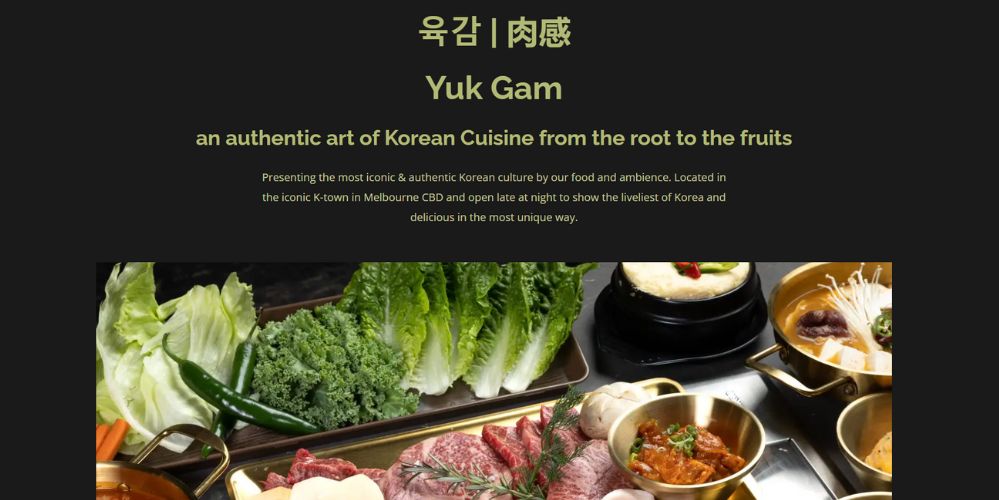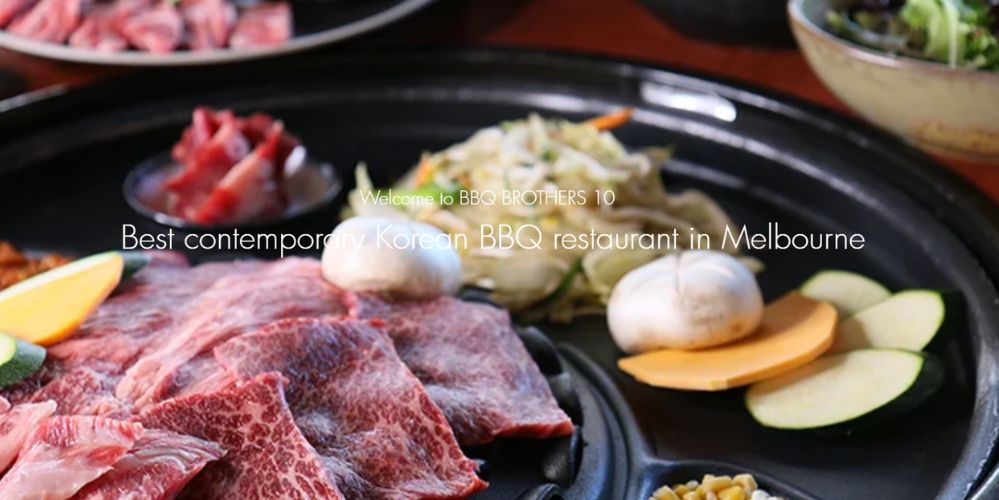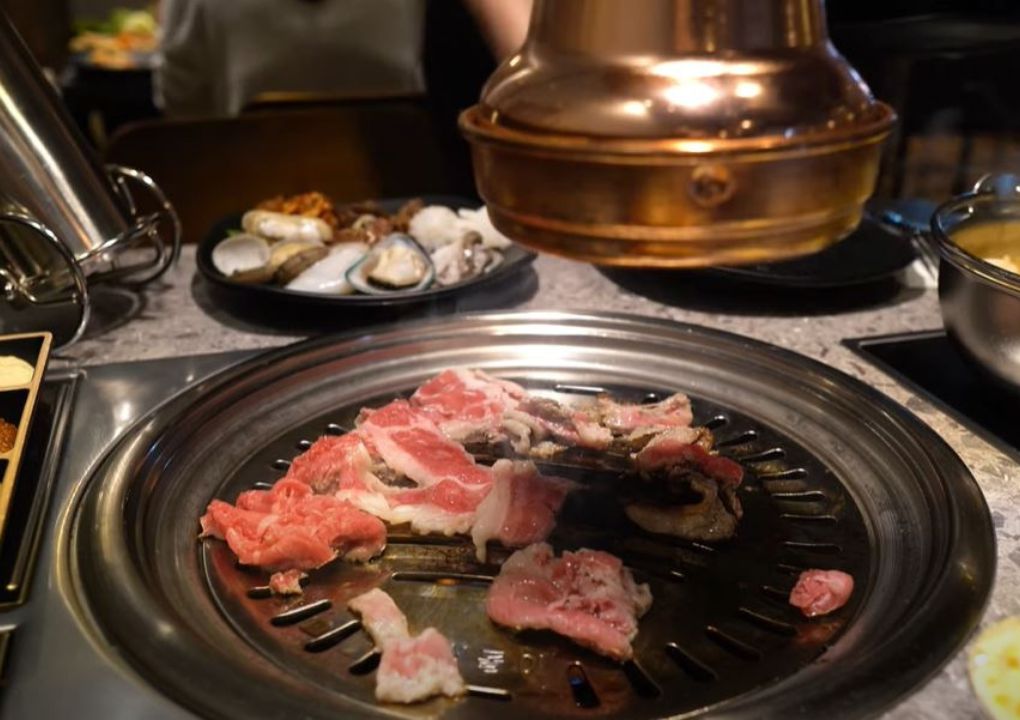Best Korean BBQ in Melbourne
One favourite gastronomic delight stands out above the others in this bustling Australian metropolis, famed for its unique food scene – the Korean BBQ. Korean BBQ has caught the hearts of food fans all over the world, from the tantalising scent of marinated meats cooking over hot coals to the vibrant and communal eating experience. Let’s go on an incredible trip as we get to know the very best Korean BBQ places that Melbourne has to offer.
What is Korean BBQ consist of?
Korean BBQ, known as “Gogi-gui” in Korean, revolves around grilling various types of meats, often at the table, and enjoying them with a selection of side dishes and condiments. It is a significant part of Korean cuisine and has gained immense popularity worldwide for its unique flavours and interactive dining style.
Here are the key components that make up a typical Korean BBQ feast:
- Meat Selection:The centrepiece of any Korean BBQ is the selection of meats. Common choices include beef, pork, chicken, and sometimes seafood like shrimp or squid. The meats are typically thinly sliced to cook quickly and evenly on the grill.
- Marinades and Seasonings:Before grilling, the meat is usually marinated in a flavorful mixture to enhance its taste. Different cuts of meat may be marinated with various seasonings, such as soy sauce, garlic, ginger, sesame oil, sugar, and other Korean spices, giving each dish a distinctive flavour.
- Grilling at the Table:One of the most exciting aspects of Korean BBQ is that the grilling is done right at the dining table. Usually, the restaurant provides built-in charcoal, gas, or electric grill in the centre of the table. Diners take turns grilling their meat.
- Banchan (Side Dishes):Korean BBQ is traditionally served with a variety of banchan – small side dishes that complement the grilled meat. These can include kimchi (fermented spicy cabbage), namul (seasoned vegetables), pickled radishes, bean sprouts, and more. Banchan adds a diverse range of flavours and textures to the meal.
- Lettuce Wraps:Many Korean BBQ dishes are served with fresh lettuce leaves or perilla leaves. Diners can place grilled meat and their preferred banchan inside the leaves, creating delicious and customizable wraps, often accompanied by rice and sauces.
- Dipping Sauces:Various dipping sauces are offered to enhance the flavours of grilled meat and banchan. Ssamjang, a thick and savoury soybean paste, and gochujang, a spicy red pepper paste, are popular choices for dipping.
- Rice and Soup:A typical Korean meal is accompanied by rice, which diners can enjoy along with grilled meat and banchan. Sometimes, a hot and comforting soup, like Doenjang-jjigae (soybean paste stew) or Kimchi-jjigae (kimchi stew), is served to complete the meal.
What is the difference between Korean BBQ and normal BBQ?
The key distinction between Korean BBQ and normal BBQ is the cooking technique, the types of meat used, and the accompanying side dishes and flavours.
Cooking Style:
- Korean BBQ: The grilling is typically done at the table, allowing diners to cook their meat right in front of them on built-in charcoal, gas, or electric grills. It’s an interactive and communal dining experience.
- Normal BBQ: In a more general sense, “normal” BBQ (often referred to as American BBQ) usually involves cooking meat outdoors on a grill or smoker. It’s usually done in backyards, parks, or outdoor venues, and the grilling is not necessarily a part of the dining experience.
Meat Selection and Preparation:
- Korean BBQ: Korean BBQ places a strong emphasis on thinly sliced meats, which are marinated in various flavorful sauces and seasonings before being grilled. Popular choices include beef (such as bulgogi), pork (like samgyupsal), and chicken, as well as some seafood options.
- Normal BBQ: In American BBQ, a wide range of meats can be used, such as ribs, brisket, pulled pork, chicken, sausages, and more. The focus is often on the natural flavours of the meats, and while marinating is sometimes used, it’s not as common as in Korean BBQ.
Seasonings and Flavors:
- Korean BBQ: Korean BBQ marinades are typically a mix of soy sauce, garlic, ginger, sesame oil, sugar, and other Korean spices, resulting in a harmonious blend of sweet, savoury, and sometimes spicy flavours.
- Normal BBQ: American BBQ often uses dry rubs or wet marinades with a different flavour profile, depending on the regional style. Sauces, such as tangy tomato-based, vinegar-based, or mustard-based, are frequently served on the side or used for basting during grilling.
Side Dishes:
- Korean BBQ: One of the highlights of Korean BBQ is the array of banchan (side dishes) that accompany the meal, including kimchi, namul, pickled vegetables, and more.
- Normal BBQ: While side dishes can be part of American BBQ, they are not as diverse and extensive as in Korean BBQ. Typical sides might include coleslaw, baked beans, cornbread, or potato salad.
Serving Style:
- Korean BBQ: Korean BBQ is often served with lettuce or perilla leaves, allowing diners to make lettuce wraps with grilled meat and side dishes. Rice is also typically served as a side to enjoy with the BBQ.
- Normal BBQ: American BBQ often involves serving the grilled meats on plates or platters, and diners may enjoy the meats with buns, cornbread, or on their own, along with the side dishes.
Is Korean BBQ sweet or spicy?
Depending on the marinades and sauces used for the grilled meats, Korean BBQ can be both sweet and spicy. In general, Korean food emphasises a harmonious balance of flavours, frequently mixing sweetness, saltiness, spiciness, and umami.
The marinades and sauces for many Korean BBQ foods have a hint of sweetness to them. Brown sugar, honey, or other sweeteners are frequent marinade additions, which help to caramelise the meat while it cooks on the grill, providing a wonderful sweet flavour to the finished meal. This sweetness enriches the whole dining experience by complementing the savoury flavours of the meat.
Furthermore, several Korean BBQ foods are well-known for their spiciness. In Korean food, particularly BBQ, gochujang, a fermented red chilli paste, and other hot chili-based sauces are commonly used. These sauces give the meat a rush of heat, providing a dramatic contrast between the sweet and spicy ingredients.
The degree of spiciness varies from dish to dish, and certain Korean BBQ establishments may provide varying degrees of spice based on individual tastes. Korean BBQ may be a fascinating journey for individuals who prefer spicy cuisine, with a variety of alternatives to fulfill their taste buds.
Now, let’s get on with our list of top picks!
BEST KOREAN BBQ IN MELBOURNE
1. YUK GAM

A Korean restaurant and bar in Melbourne’s CBD. Their aesthetic is colourful and lively, fusing historic elements with Korean contemporary youth culture. From the roots to the fruits, the real art of Korean food. Yuk Gam’s food and atmosphere represent the most iconic and authentic Korean culture. Located in Melbourne CBD’s famed K-town and open late at night to present the liveliest and most tasty aspects of Korea.
Website: https://yukgam.com.au/
2. MANSAE KOREAN BBQ RESTAURANT

Mansae, derived from the Korean term for “hip hip hooray,” celebrates Korean barbeque food. Mansae provides a lively, engaging informal atmosphere, as well as the best quality Australian Wagyu beef and free-range prime pig grilled fresh on a barbeque grill at each table. In keeping with Korean cooking culture, a selection of banchan side dishes is offered alongside your barbeque meat.
Website: https://www.mansaekbbq.com.au/
3. BBQ BROTHERS 10

The owners left Korea 20 years ago to establish a better future for themselves. They both entered the hospitality sector and as time passed, they wanted their own Korean restaurant. “BBQ Brothers10” was born.
It then became the legendary “Korean BBQ” in Melbourne CBD.
Website: https://www.bbqbrothers10.com.au/
4. FLAVA KOREAN BBQ

Their whole menu is centred on traditional Korean ingredients and spices. The greatest Korean cuisine is cooked simply and carefully on the grill.
The menu features a variety of Korean barbeque delicacies, such as Korean-style wagyu ribeye steak, pig belly, and stone-bowled Korean stew. There are several Korean beers to choose from, as well as wines and soft drinks.
Website: https://flavakoreanbbq.com.au/
5. HALLAH KOREAN BBQ

Named after Mt. Hallah, South Korea’s highest summit. It is located on Jeju Island, popularly known as the “Island of the Gods,” and is regarded by residents as the island’s heart.
At Hallah, you can be sure they will provide you with an exceptional dining experience and aspire to exceed your expectations.
Website: https://koreanbbqmelbourne.com.au/
On your cooktop, you may cook with a cast-iron pan, a nonstick pan, or any comparable griddle. Or, you might improve your setup at the table by using a portable camp stove and butane cans. Fire it up with a grill pan made in the Korean manner; its unique grooves prevent meat from sticking and aid in the drainage of oil.
When preparing Korean BBQ, preheat your grill or hotplate and, if you’re cooking inside, make sure the windows are open. You may massage the fattiest meat on the grill or brush some oil on it. Add the meat slices once the grill is heated. Flip as necessary; but, if you flip it too much, the flavour will be lost.
Sesame oil is one of the major elements in the marinade, which is the key component of Korean barbeque. Pour it over a piece of thinly sliced meat after blending it and letting it settle. All of the flavouring is already infused within when you place it on the grill, so you can quickly create something really wonderful.

